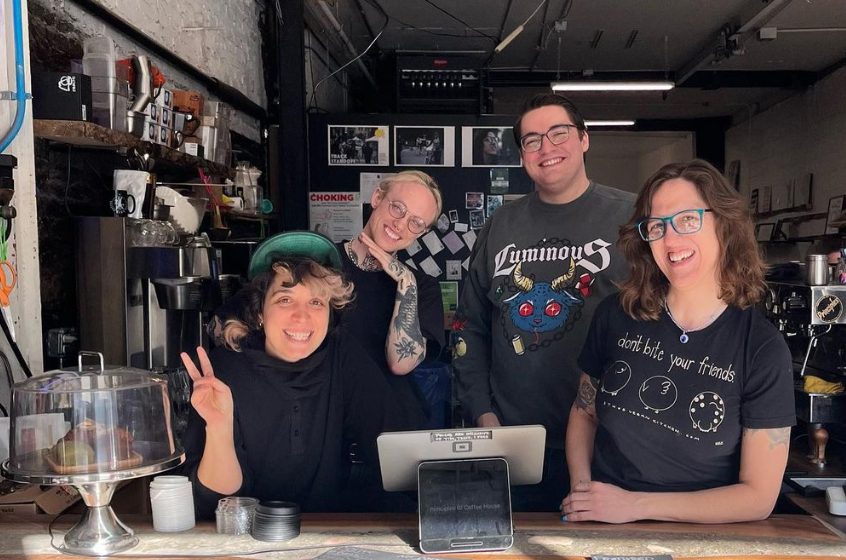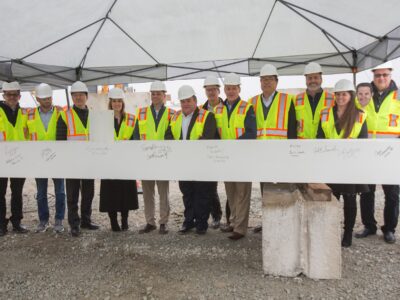Coffee shops can act as community touchstones, providing the fuel for our day, free wi-fi, and a place to chat with friends. As the country continues toward a sustainable future, these special spots must allow us to enjoy our morning cup of coffee as sustainably as possible.
The businesses below have taken up the eco-friendly mantle proudly. Check out how they are creating a green future in their neighborhoods.
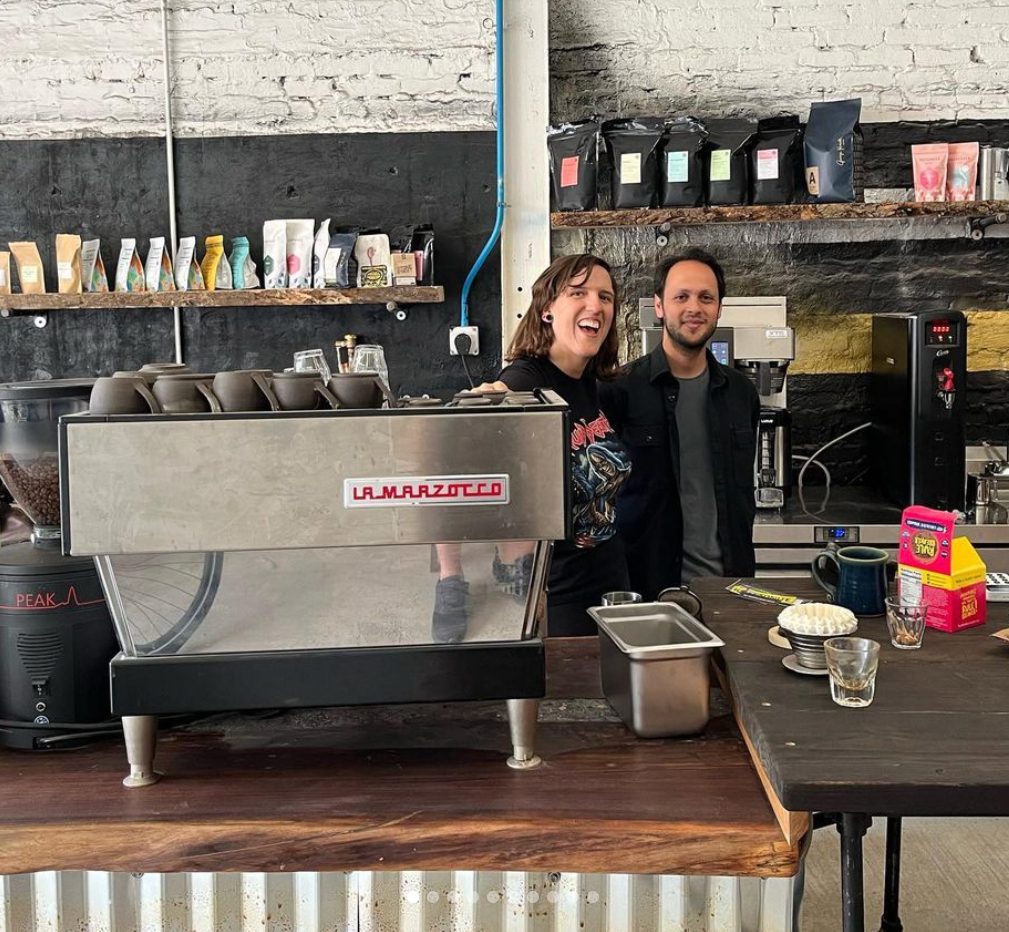
Principles GI Coffee House, Brooklyn, NY
Opening in June 2022 in Gowanus, Principles GI Coffee House is a place where people from all walks of life can sit down and enjoy a cup of joe. The shop is also committed to helping mitigate climate change and reduce waste. One step Principles GI Coffee House is taking is its “zero coffee-cup waste by 2023” initiative last year, which included customers bringing in their containers or renting one.
Katie Bishop, the owner, says her inspiration came from the GI coffee houses in the 1960s. Soldiers became disillusioned by the idea of the Vietnam War and often visited these shops run by protestors and opened near military bases. Principles is of a similar ilk, aiming only to uplift community members.
What makes Principles GI stand out is its pricing policy. The menu does not have fixed prices for everything.
Specialty drinks have a fixed price, but regular coffee is priced on a “pay what you please” system. Some people might pay $20, but they could also give as low as $1.
The shop also offers a few free services for patrons. For starters, cyclists can get their bikes tuned up or adjusted, along with free biking classes. Water and ice are free of charge, and you can use the bathroom without purchasing an item. Bishop’s shop fosters social consciousness and communal thinking — one cup of coffee at a time.
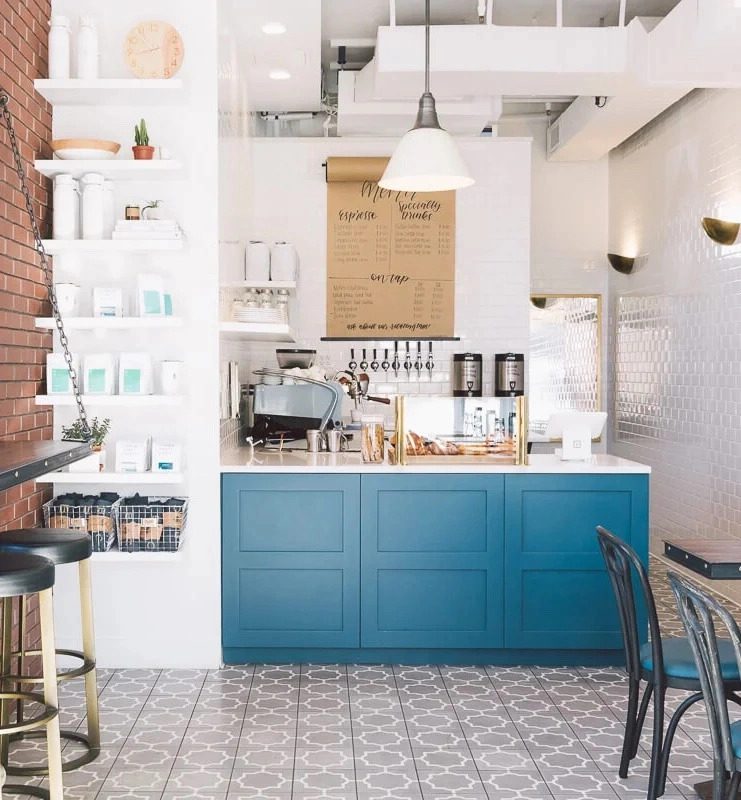
Blue Sparrow Coffee, Denver, CO
Principles GI is not the only coffee shop implementing these sustainable practices. Blue Sparrow Coffee, located in Denver’s River North Arts District and the Platte Street neighborhood, aims to brew delicious coffee with as minimal environmental impact as possible. The coffee shop’s 2022 sustainability report outlines how waste is disposed of, and water and electricity are used.
The report uses data from January 2021 to February 2022, presenting how Blue Sparrow performed in this two-year stretch and giving the company a baseline to measure future progress.
At the Platte Street shop, energy consumption averaged around 8,807 kWh a month from January 2021 to February 2022, including the energy used with a neighboring business. In a comical spin, they measure their consumption to the equivalent of dogs per kilowatt.
In terms of water use, the shop consumed 24,000 gallons of water per month on average for a year. However, that also includes averages from nearby businesses. They discovered that 44% of their waste is compostable, and 55% can be recycled, giving the company a vision of where to start.
To that end, Blue Sparrow implemented the “Single-Use Initiative” in 2022, which charges 10 cents per single cup use. The Blue Sparrow website says the money will go “towards our ‘Sustainability’ Fund, used to continue moving the needle with innovative and exciting initiatives that support our people and the planet.”
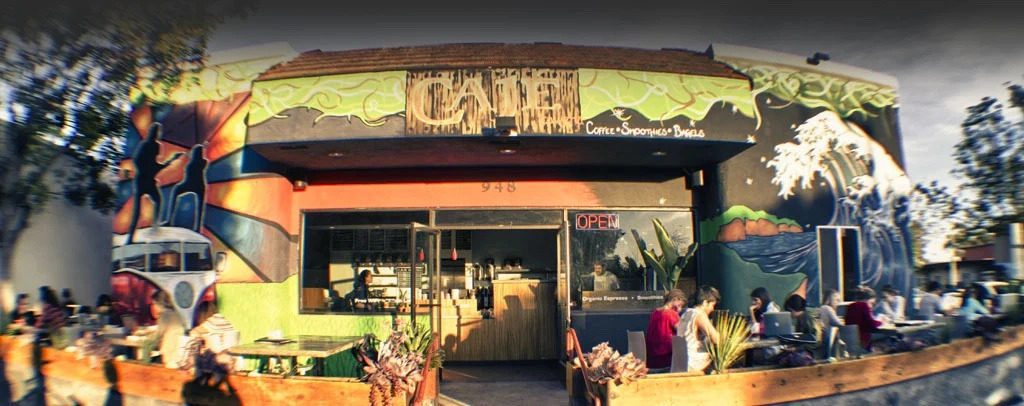
Cajé Coffee Roasters, Santa Barbara, CA
Much like Principles GI, Cajé Coffee encourages customers to bring their own tumblers. With four locations within Santa Barbara, CA, single-use plastic would’ve created an extreme amount of waste.
To eliminate plastic entirely, the shop implemented the “BYOM” system, or “bring your own mug.” The problem is tourists don’t really understand how it works. Of course, that’s not something Cajé could’ve anticipated. The solution the owners came up with is quite simple.
Cajé offers customers a reusable beverage glass if they don’t bring a receptacle. The catch here is it costs $5 to use the coffee house’s container. When the drink is all gone, patrons return the glass and get their money back. It eliminates the need for paper or plastic cups, thus keeping waste streams low.

